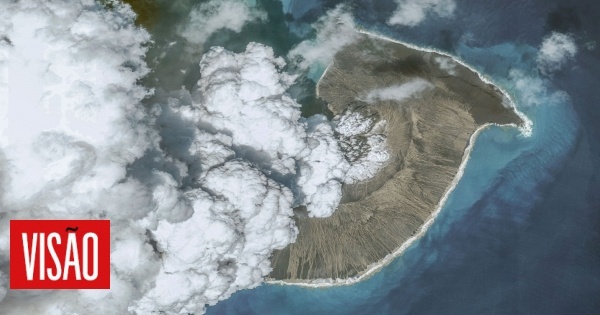Scientists from Institut Dom Louise and IPMA have uncovered the phenomenon that spurred the global spread of the Tonga tsunami
2 min read

The gravitational acoustic wave from the brutal eruption of the Hungga Tonga-Hung Hapai volcano in the South Pacific, on January 15, was the source of the resulting global tsunami. The conclusion is from a group of researchers from the Dom Luiz Institute, the Faculty of Sciences of the University of Lisbon, and from the Portuguese Institute of the Sea and Atmosphere (IPMA).
Through a combination of sea level and atmospheric data and satellite images from different parts of the globe, on which they applied numerical and analytical models, the scientists explained that “the tsunami was driven by a constantly moving source, in which gravitational sound waves radiated by eruption excite the ocean and transmit energy to him via resonance,” as stated in the study, which was published in the journal Nature under the title “The global tsunami in Tonga is explained by a fast-moving air source”.
The coincidence between the tsunami and the time of arrival of these gravitational sound waves confirms, according to the researchers, that there is a direct relationship between the two phenomena. “The volcano’s violent eruption created remarkable airwaves and an exceptionally fast global tsunami,” comments lead author Rachid Omera, researcher at the Dom Louise Institute and the IPMA.
The geophysicist gives as an example the fact that the tsunami hit the Portuguese coast, on the other side of the planet (more than 17 thousand km), “ten hours earlier than expected”, crossing the oceans and causing sea waves of surprising size. It has remote areas.
“This was the first time that a volcano-induced tsunami has been globally recorded by modern and dense instrumentation worldwide, providing a unique opportunity to investigate air/water coupling processes in their generation and propagation,” says O’Meara.
It is common for volcanic eruptions to cause tsunamis, but transoceanic impacts are now rare. In Portugal, according to IPMA information released at that time, “changes in sea level” were observed in the Azores, Madeira and the mainland. In Ponta Delgada, the water rose 40 cm, in Peniche 39 cm and Funchal 20 cm.
“This tsunami spread across different oceans, including the Atlantic, with variations in sea level that were observed in practically all tide gauge stations operating on the Portuguese coast, and variations with amplitudes of less than half a meter,” then reported to the IPMA
The eruption of a submarine volcano, a few kilometers from Tonga, released a cloud of ash and gases into the sky that reached a height of 20 kilometers. Tsunami waves caused damage in New Zealand, Chile, Peru and the USA.

“Entrepreneur. Music enthusiast. Lifelong communicator. General coffee aficionado. Internet scholar.”

:strip_icc()/s04.video.glbimg.com/x720/11792055.jpg)

:strip_icc()/s03.video.glbimg.com/x720/11786998.jpg)